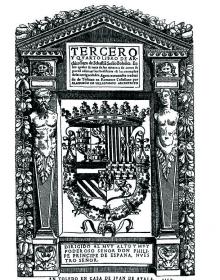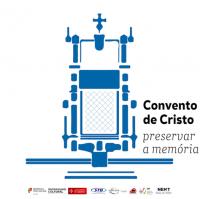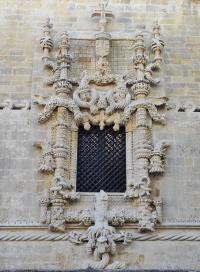- INÍCIO
- MONUMENTO
- História
- Convento de Cristo
- Personalidades
- D. Afonso Henriques
- D. Gualdim Pais
- D. Dinis
- D. João I
- D. Lopo Dias de Sousa
- D. Duarte
- Príncipe D. Henrique
- D. João II
- D. Manuel I
- Diogo de Arruda
- João de Castilho
- Jorge Afonso
- Olivier de Gand
- D. João III
- Diogo de Torralva
- Frei António de Lisboa
- Baltazar de Faria
- Filipe Terzi
- Dinastia Filipina
- D. Filipe II de Espanha
- D. João IV
- Domingos Serrão
- D. Maria II
- Príncipe D. Fernando
- Costa Cabral
- Artífices e Artistas
- Arquitectura
- Património Associado
- Património Imaterial
- Glossário
- VISITE O MONUMENTO
- APRENDER COM O PATRIMÓNIO
- TOMAR
- REDE DOS MOSTEIROS

TRABALHOS CIENTÍFICOS
Trabalho publicado por ocasião do Dia Internacional dos Monumentos e Sítios, 2022 - 18 de abril.
AS ALTERAÇÕES CLIMÁTICAS E A IMPORTÂNCIA DA MONITORIZAÇÃO AMBIENTAL NO CONVENTO DE CRISTO: A PRESERVAÇÃO DA CHAROLA
Eduardo Ferraz (1,2), Cristina Andrade (3,4), Ricardo Triães (1,2), Andreia Galvão (5) e Rui Ferreira (5)
1 - Techn&Art, Instituto Politécnico de Tomar, Quinta do Contador, Estrada da Serra, 2300-313 Tomar, Portugal
2 - Geobiotec, Departamento de Geociências, Universidade de Aveiro, Camps Universitário Santiago, 3810-193 Aveiro, Portugal
3 - Laboratório de Investigação Aplicada aos Riscos Naturais (NHRC.ipt), Instituto Politécnico de Tomar, Quinta do Contador, Estrada da Serra, 2300-313 Tomar, Portuga
4 - Centre for the Research and Technology of Agro-Environmental and Biological Sciences (CITAB), Universidade de Trás-os-Montes e Alto Douro, Apartado 1013, 5001-801 Vila Real, Portugal
5 - Direção Geral do Património Cultural / Convento de Cristo, 2300-000 Tomar, Portugal
"Alterações climáticas
Os bens patrimoniais culturais, como edifícios históricos, monumentos, sítios paleontológicos, entre outros), os seus conteúdos intangíveis são um legado do passado que nos conferem um senso de pertença e de identidade nacional. Estes bens sempre foram e continuarão a ser submetidos a interações (diretas e indiretas) com o meio ambiente, e neste sentido, mudanças em alguns parâmetros atmosféricos que a seu tempo se revelam uma alteração no clima, podem constituir uma potencial ameaça à sua integridade. (VER MAIS) "
---------------------------------------------------------------------------------------------------------------
ASSESSMENT OF MICROBIOTA PRESENT ON A PORTUGUESE HISTORICAL STONE CONVENT USING HIGH-THROUGHPUT SEQUENCING APPROACHES
Autores: Tânia Rosado, Luís Dias, Mónica Lança, Carla Nogueira, Rita Santos, Maria Rosário Martins, António Candeias, José Mirão, Ana Teresa Caldeira
The study performed on the stone materials from the Convent of Christ revealed the presence of a complex microbial ecosystem, emphasizing the determinant role of microorganisms on the biodecay of this built cultural heritage.
Link para o artigo: Assessment of microbiota present on a Portuguese historical stone convent using high-throughput sequencing approaches
--------------------------------------------------------------------------------------------------------------
A FIRST INSIGHT ON THE BIODEGRADATION OF LIMESTONE: THE CASE OF WORLD HERITAGE CONVENT OF CHRIST
Autores: Tânia Rosado, Mara Silva, Andreia Galvão, José Mirão, António Candeias, Ana Teresa Caldeira
The present study is a multidisciplinary approach applied to architectural stone materials of the Convent of Christ in Tomar (Portugal) in order to understand and mitigate the active decay processes. The structure and appearance of the stonework from the Convent of Christ are strongly affected by stains, biofilms and structural degradation. To investigate these phenomena, a multianalytical approach comprising X-ray microdiffraction, scanning electron microscopy, microRaman and microinfrared spectroscopy was applied to the examination of altered outdoor stone areas being detected calcium oxalates, carotenoids and microbial proliferation. The presence of these alteration products seems to be correlated with the microbial activity of bacteria, microalgae, cyanobacteria and filamentous fungi. This work showed that the application of complementary methodologies is an efficient strategy to characterise the stone decay, and constitute a starting point for successful conservation intervention plans that are urgent to ensure the preservation and safeguard of this emblematic monument.
Link para o artigo: A first insight on the biodegradation of limestone: the case of the World Heritage Convent of Christ
SERVIÇOS - ACTIVIDADES








